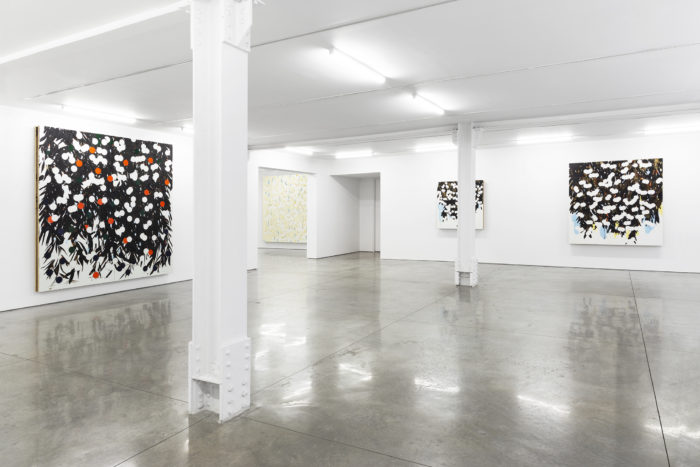
Donald Sultan’s new series of images at Ryan Lee is the first exhibition of his Mimosas, inspired by a presentation of the blossoms he received from a friend in the South of France. He began using the structure of the ornamental plant that grows in warm temperate regions of the world to continue his five-decade investigation of the space between abstraction and representation, exploring boundaries between the organic and the industrial, the invented and the natural, thinking and feeling. Mimosas are fast-growing yellow and green evergreens that originated in the southeast corner of the continent of Australia. There are now two varieties. At relatively low altitudes mimosas grow into tall trees, one hundred feet tall, with long leaves. At higher altitudes, among snowy mountain peaks, they are more like shrubs, growing half as tall with the leaves about a third as long. Sultan’s stylized paintings and drawings, as always, give a surprisingly realistic impression from afar, looking remarkably the way actual mimosas look in their natural habitat. But upon investigation, one sees liberties taken with color and form with Sultan elevating the pictorial elements to pure abstraction.
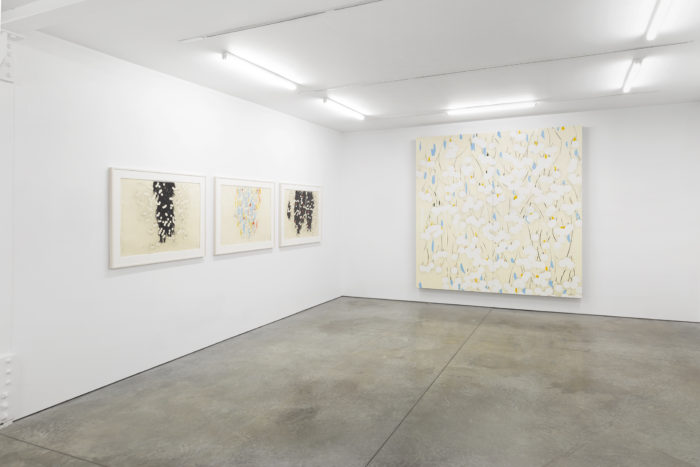
Sultan was one of the first of the “New Image” painters in the 1970s to paint flowers, a popular subject now. He is known for his tulips, and poppies and for fruits like lemons and pomegranates. In a previous series of morning glories, Sultan used little geometric circles the way he does here, but as the center of a flower. He has also previously employed them in series of dominoes or buttons, with the discs appearing as button holes in the 1990s. In the case of the Mimosas, each flattened circle represents an entire puffy, three-dimensional blossom that pops off the background in sensuous enamel. The monumental paintings, using vinyl and tar as well as enamel on masonite, and drawings in conte crayon, charcoal, oil stick, graphite and yes, enamel, on paper, were created simultaneously and thus inform each other, becoming the latest in Sultan’s series depicting ideas as substitutes for physical events.
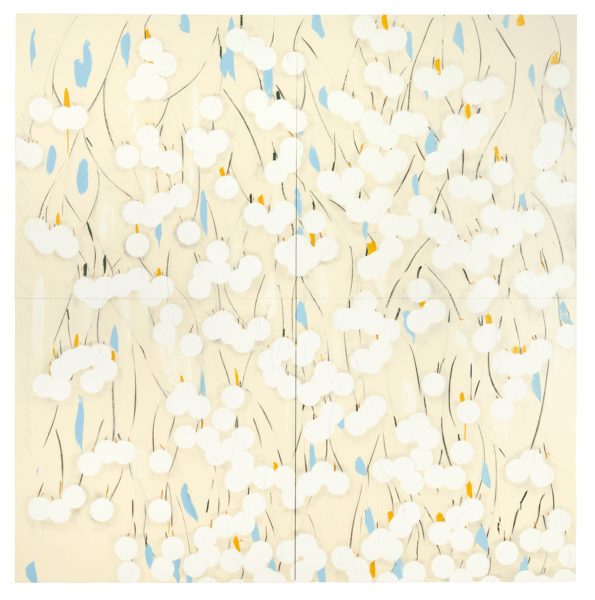
The colors of the backgrounds are sensible enough, occasionally robin’s egg blue, reminiscent of skies in the south of France, elsewhere white or pink or in one of the more elegant drawings, my favorite, Mimosa Feb 5 2019, 2019 an earthy ecru. In only one work are the mimosa leaves green, realistically rendered the shade they might be in bright light. In most of the others, they are black or black and brown, as if in silhouette or at twilight. In a couple of the drawings, they take the form of blue and orange or blue and dark yellow marks woven surrounding wispy black lines to indicate vertical motion, or if not motion, a vertical presence, like hanging bananas or a weeping willow. In two of the drawings, this presence is less of a field but instead a terse visual statement, a dark clump of the leaves simply announcing they are there. In one, a single clump, and in another, three and a half clumps, provide the information in Sultan’s visual shorthand, “leaves go here.”
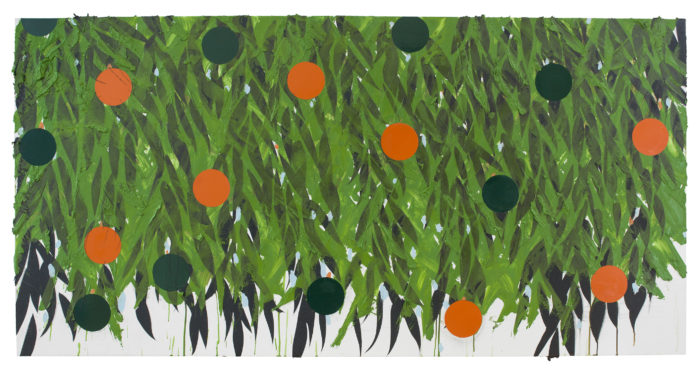
The dominant element in all of these works, without exception, are the blossoms themselves, circular discs, seeming to rain down across the surface, creating divine interference between the layers of dark backgrounds and leaves and our eye, becoming the active subjects. They hover, demanding attention, reminiscent of Alexander Calder, John Baldessari or Damien Hirst circles, forcing us to consider negative space, usually in white, occasionally other colors. In one, Mimosa with Orange and Green Oct 3 2018, 2018 the only one with green leaves, the flans are orange and shades of a solid dark green enamel. These arrays of discs elevate the still life tradition by deconstructing Sultan’s subjects into basic forms.

His use of industrial materials, as always, is striking. The masonite surfaces he has built for the paintings are beautiful when seen from the side, revealing secrets of their structure. The blacks in the paintings are done with his signature element, tar. Sultan was born in Asheville, North Carolina in 1951 near Black Mountain College but his interest in the industrial world developed during his formative years at the Art Institute of Chicago. His father was a tire company owner and he has attributed his frequent use of the material, sometimes gorgeously thick, other times applied thinly like paint, as the influence of his father’s tire business. He has called his father “a physical person” and noted his grandfather was on the assembly lines of Detroit during the Depression. So physicality has always played an important part in his work.
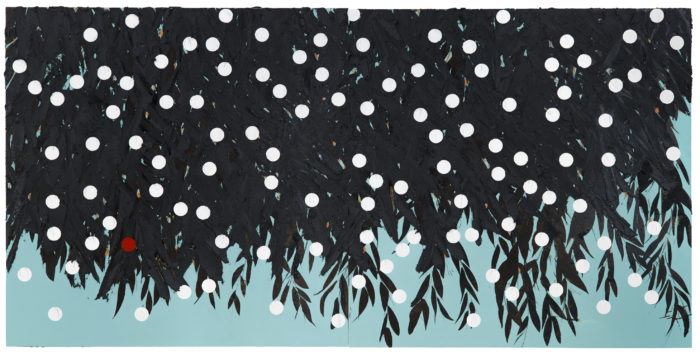
Sultan has worked with spackle and latex and on grounds of vinyl tiles. He is known for scraping into the depth of the material to create lines and for gouging, sanding, and buffing to create various degrees of flatness, depth, gloss, and texture. Here, the delicate mimosa blossoms seem to float on the surfaces of these pieces, carefully placed there on subtle sheets or membranes. Even the thick tar of the eight foot long Mimosa with Anomaly Oct 14 2018, 2018 seems to delicately cradle the anomaly of the title, a single orange dot toward the left of the image. This cradling effect hurls us back and forth between the 3-dimensional world of real mimosas into Donald Sultan’s domain of flat, formalized, schematized shapes, textures and hues.
Donald Sultan: Mimosa, Paintings and Drawings at Ryan Lee
April 4 – May 11, 2019
515 WEST 26TH STREET, NY 10001
-Mark Bloch
